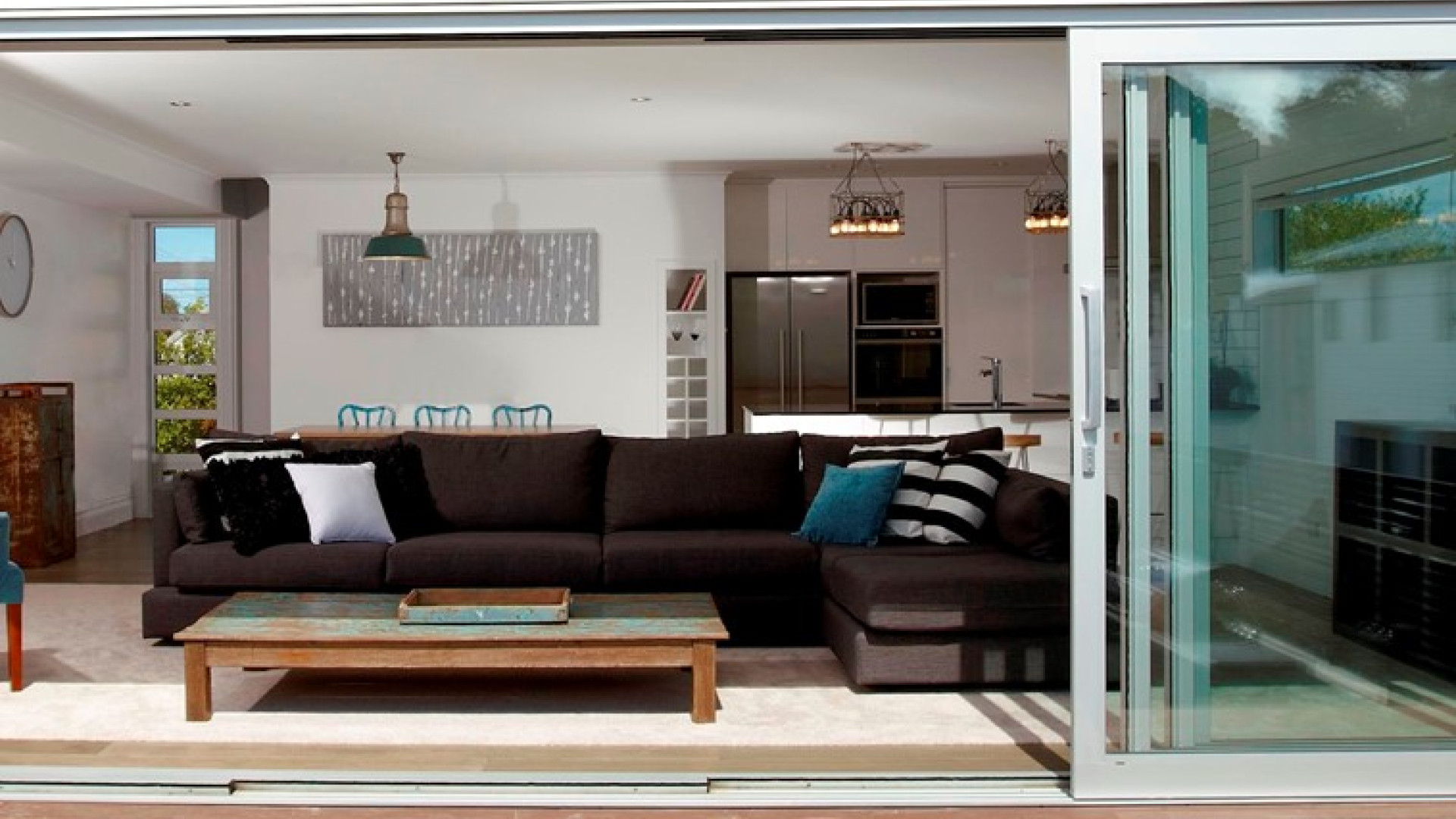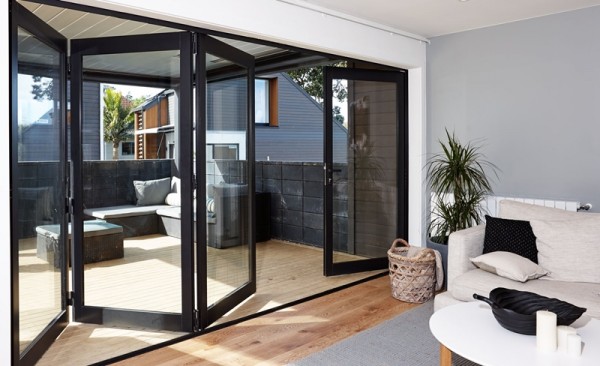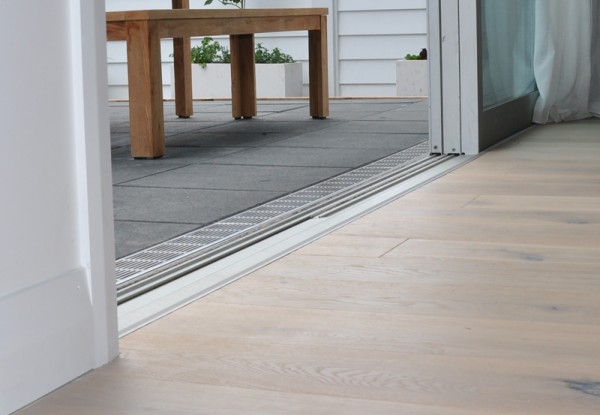Hinged Doors
Windows
Complementary
Hit enter to search or ESC to close
How to choose between bifold and sliding doors

Light, ventilation, views - these are three vital components to a comfortable new home, and they can all be achieved with the perfect door. But each of these three factors can be acquired with two different door types: bifold and sliding.
So what's the difference, and is there a better option for your home?
Both sliding and bifold doors let in a lot of natural light during the day, and offer expansive views.
An overview of the difference between sliding and bifold doors
Both of these door types are designed to allow lots of natural light into a space, and to open as wide as you like in order to provide great ventilation and indoor/outdoor flow. Ultimately, the decision between one or the other is going to come down to personal taste.
Bifold doors
A bifold door is made up of two or more tall, narrow panels with hinges joining them together. They open by stacking in an accordion-style pattern, sliding off to one side in a zigzag to reveal a wide-open cavity free of obstruction, ideal for indoor/outdoor flow and maximising views.

Bifold doors are made of two or more hinged panels.
Sliding doors
A sliding door, and its stacking door counterparts, are typically made of two or more much wider panels that slide one behind the other. This is your classic Kiwi veranda patio door, with large glass panes that allow plenty of light in whether open or shut. In the case of a stacker, the doors slide back to one side, overlapping in front of the final panel or into a cavity or over an exterior wall, allowing an even wider opening. Both door types can come with flush sills, a key design feature. This seamless appearance enhances indoor/outdoor flow plus it reduces tripping hazards by recessing the sill into the frame and raising the exterior deck or patio to sit level with the door.
Pros and cons of bifold doors
Bifold door pros
Many home builders love designer bifold doors because, when open, they leave behind an almost totally empty cavity. This means you can have unobstructed views with your doors open, connecting your living room with the outdoors.
So you aren't always opening the entire bifold every time you want to get through, bifold doors can also be designed with a single access door to one side. This can be opened like any regular door.
Bifold doors can be designed to meet at a 90-degree corner without a pillar, letting more natural light into your space as the sun moves around your home - and adding a unique architectural feature to your property not found in many others.
Both door types can come with flush sills, a key design feature. This seamless appearance enhances indoor/outdoor flow plus it reduces tripping hazards by recessing the sill into the frame and raising the exterior deck or patio to sit level with the door.
Bifold door cons
Though bifold doors can become nearly invisible when open, when closed the vertical frames between each panel are more obvious, this can be a benefit when used for added privacy.
The other important note about bifold doors is that they require space to stack. This means you will need to keep some free space on the stacking side of the door (which is typically the outside) so that it isn't blocked.
Pros and cons of sliding doors
Sliding door pros
Sliding doors have been around for decades for a reason. Whether closed or open, the large glass pans let in a ton of natural light and offer near-unparalleled views to the outside. Because they slide instead of swing, each glass pane in a sliding door can be much taller and wider than a typical door or bifold door. Side casement or awning windows can also be built into the area so that you can ventilate your home without opening the doors.
Like bifold doors, sliding doors can be built into a 90-degree corner without a pillar.
Sliding door cons
Most sliding doors, unless they are a stacker design, do not open fully. There will typically always be a panel that remains closed, with the sliding panels behind. Most commonly with a two-panel slider, this fixed panel will either take up 50 per cent or 75 per cent of the doorway cavity.
That said, we should note that sliding stacker doors are designed to mitigate this issue. If required, the panels can disappear into a pocket built into the wall, or slide over the exterior of the home (known as overcladding). In both cases, you'll open up 100 per cent of your doorway instead.

To reduce tripping hazards and improve indoor/outdoor flow, a flush sill is a good idea.
What options are available?
Both sliding/stacking and bifold door options are available from Altus Windows - New Zealand's experts on aluminium windows and doors.
Our sliding door options include everything mentioned in this article so far, plus:
- Triple stackers for expanses up to 8 metres wide.
- Bi-passing stackers, where each panel slides independently of the others for total control.
Our bifold door options include, on top of what we've already mentioned:
- Foldback designs, where the stacked doors can fold flat against your home's cladding to create a completely open doorway.
- Your choice of door size, from two to 10 panels.
To find out more or to speak with a friendly expert at Altus Window Systems, contact us today.













